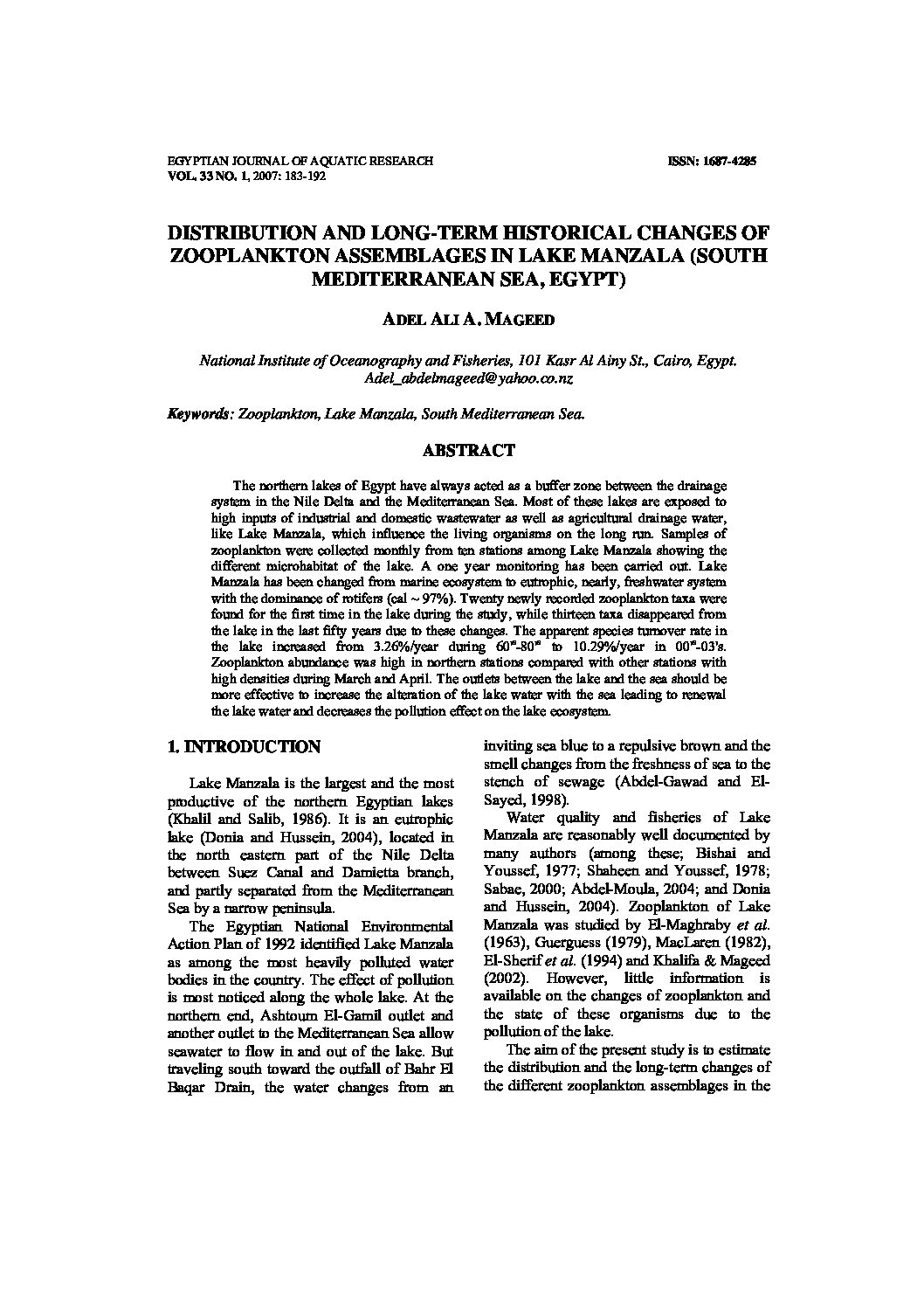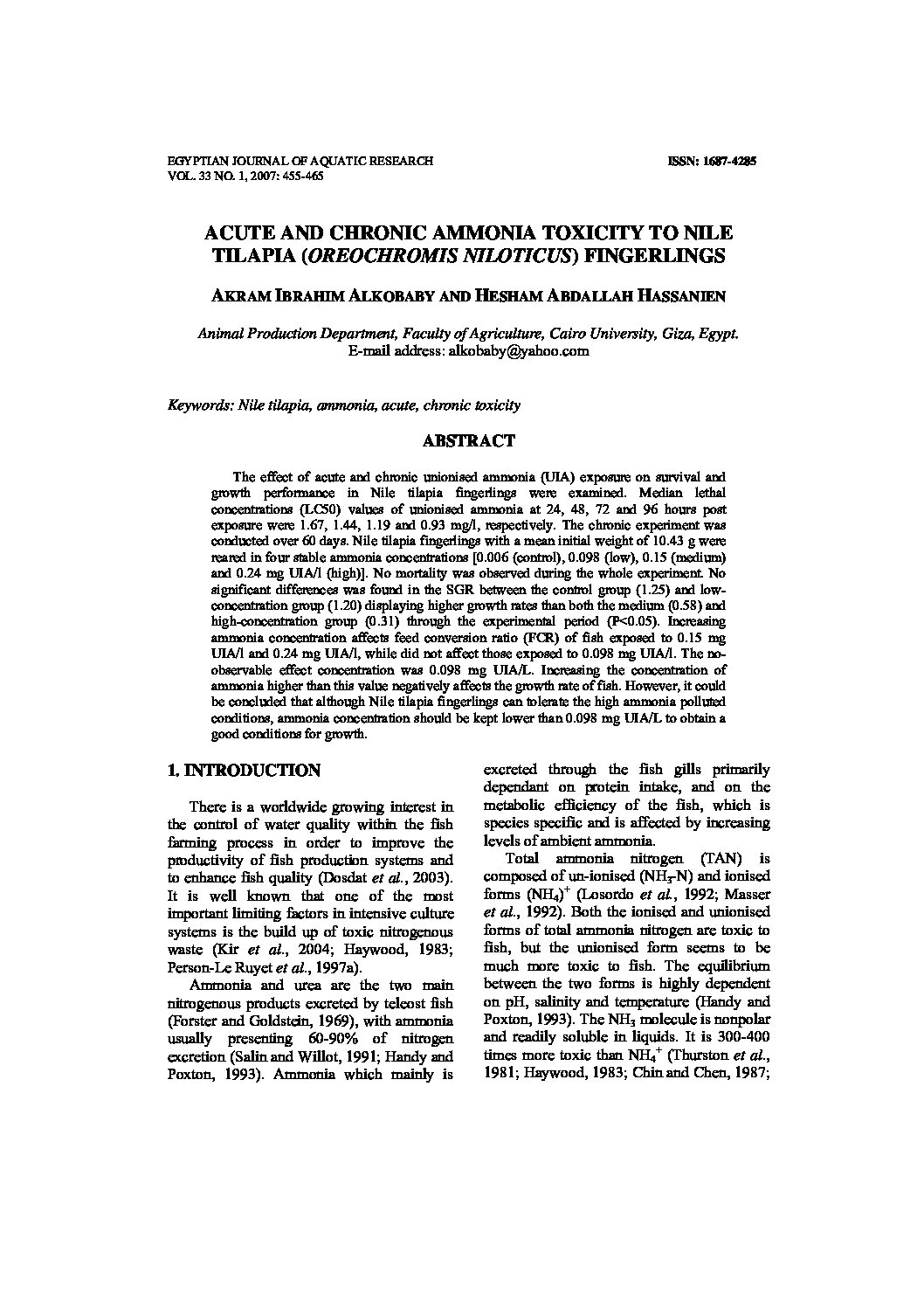Categories
vol-33DISTRIBUTION AND LONG-TERM HISTORICAL CHANGES OF
ZOOPLANKTON ASSEMBLAGES IN LAKE MANZALA (SOUTH
MEDITERRANEAN SEA, EGYPT)
ADEL ALI A. MAGEED
National Institute of Oceanography and Fisheries, 101 Kasr Al Ainy St., Cairo, Egypt.
[email protected]
Keywords: Zooplankton, Lake Manzala, South Mediterranean Sea.
ABSTRACT
The northern lakes of Egypt have always acted as a buffer zone between the drainage
system in the Nile Delta and the Mediterranean Sea. Most of these lakes are exposed to
high inputs of industrial and domestic wastewater as well as agricultural drainage water,
like Lake Manzala, which influence the living organisms on the long run. Samples of
zooplankton were collected monthly from ten stations among Lake Manzala showing the
different microhabitat of the lake. A one year monitoring has been carried out. Lake
Manzala has been changed from marine ecosystem to eutrophic, nearly, freshwater system
with the dominance of rotifers (cal ~ 97%). Twenty newly recorded zooplankton taxa were
found for the first time in the lake during the study, while thirteen taxa disappeared from
the lake in the last fifty years due to these changes. The apparent species turnover rate in
the lake increased from 3.26%/year during 60’s
-80’s
to 10.29%/year in 00’s
-03’s.
Zooplankton abundance was high in northern stations compared with other stations with
high densities during March and April. The outlets between the lake and the sea should be
more effective to increase the alteration of the lake water with the sea leading to renewal
the lake water and decreases the pollution effect on the lake ecosystem.







